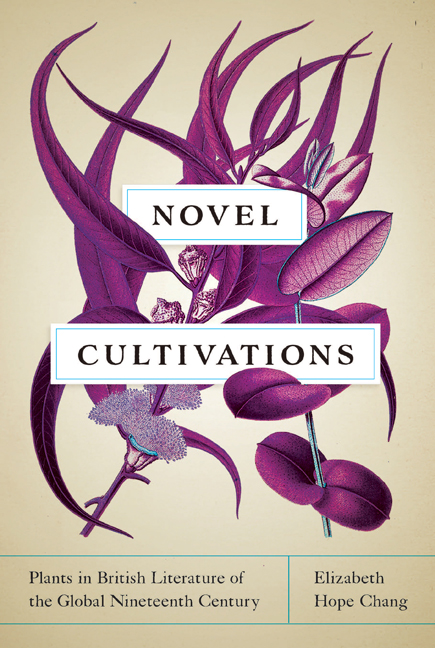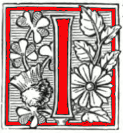
 n "The Adventure of
the Naval Treaty" (1893), Sherlock Holmes bends Watson's ear with an
account of a stakeout in rhododendron bush. Standing in the
plant's dark shadow, he observes the nighttime traffic to and from a
house from which a valuable document has been stolen. Although it seems only tangentially related to the plot, this convenient rhododendron may not be a random detail. An import to Britain, the plant, which spreads rapidly, also has toxic qualities that make it a danger to native species. It, too, is an interloper. The
result is a horticultural mis-en-abîme: a detective on the trail of an
interloper himself becomes an interloper who, in turn, uses a third
interloper, the rhododendron, to avoid detection. If Elizabeth Hope
Chang's provocative Novel Cultivations: Plants in
British Literature of the Global Nineteenth Century (2019)
teaches anything, it is that these horticulturally-informed moments
permeate mid-Victorian literature, giving botanical form to anxieties roused by the expansion of Britain's empire.
n "The Adventure of
the Naval Treaty" (1893), Sherlock Holmes bends Watson's ear with an
account of a stakeout in rhododendron bush. Standing in the
plant's dark shadow, he observes the nighttime traffic to and from a
house from which a valuable document has been stolen. Although it seems only tangentially related to the plot, this convenient rhododendron may not be a random detail. An import to Britain, the plant, which spreads rapidly, also has toxic qualities that make it a danger to native species. It, too, is an interloper. The
result is a horticultural mis-en-abîme: a detective on the trail of an
interloper himself becomes an interloper who, in turn, uses a third
interloper, the rhododendron, to avoid detection. If Elizabeth Hope
Chang's provocative Novel Cultivations: Plants in
British Literature of the Global Nineteenth Century (2019)
teaches anything, it is that these horticulturally-informed moments
permeate mid-Victorian literature, giving botanical form to anxieties roused by the expansion of Britain's empire.
Chang's is the sort of study that uses small details to illuminate an entire world. The trouble with this kind of study is that, apart from well-known exceptions such as the man-eating monster trees of late Victorian popular novels, Victorian writers generally used plants as ornaments; to take these plants more seriously than the writers did themselves risks the reader's incredulity. For the most part, Chang does show that plants in mid-Victorian literature did important narrative work despite their seeming irrelevance. But did Victorian plants do actual narrative work in the lives of Victorians, in their sense of themselves as, say, gardeners or landowners, as Chang seems to suggest? Did Victorians aim to capture this labor in their writing?
Following a substantial introduction in which Chang surveys Victorian horticulture as it appeared in sources ranging from garden supply catalogues to popular novels, Chang analyzes these representations of plants according to their positions in relays of power. The first relay, which suffuses the arguments to follow, is between narrator and reader. Considering work by Wilkie Collins, Rider Haggard, Conan Doyle, and others, Chang finds imported plants, like the rhododendron in "The Adventure of the Naval Treaty," functioning like traditional clues in a detective story. Like the clue, they elicit investigatory activity, that is, they encourage the reader to imagine they might be more than just plants. Chang suggests that such literary representations of imported plants helped readers make sense of contemporary mystifications, by "bridg[ing] the breaks forced open by particular wedges of assimilation, acculturation, and other kinds of global entry." (47)
In the next relay, between city and country, Chang finds literary city plants choking on urban smog along with their equally stifled human counterparts. Growth and development are as thwarted in flowerpots as they are in homes and schools. "Though Victorian London was often defined by its inhospitality to plant life," Chang writes, "fictional urban domestic space continued to arrange itself around the stunted, fallow, or dying gardens of the polluted city" (18). Perhaps nowhere was this theme more evident than in the fin-de-siècle moodiness of Oscar Wilde’s The Picture of Dorian Gray (1890). On Chang's reading, Dorian's story becomes a claustrophobically horticultural fever dream, complete with the imported flowers favored by the author -- Oscar Wilde's signature adornment was a carnation, colored bright green thanks to recently invented aniline dyes, and wired through a button-hole.
Widening her lens to encompass the hybridization of plant life in the countryside, Chang shows how Victorian writers used plants to destabilize common assumptions about property. In Rider Haggard's Colonel Quaritch, V.C.: A Tale of Country Life (1911), Frances Hodgson Burnett's children's novel The Secret Garden (1911), and Daphne du Maurier's Rebecca (1938), "the narrative cementings of domestic ties and land claims that these gardens once ensured are changed through the circulation of global plants and people." As evidence of this horticultural destabilization, Chang adduces the obsessiveness with which Haggard's villain, Edward Cossey, cultivates chrysanthemums, claiming that his attentiveness "betokens a new absorption in flowers that unhinges organic ties to heritage estates." (19) Similarly, in Du Marier's treatment of "intrusive exotic plant life" Chang finds evidence of a wider preoccupation with global commerce in garden plants.
Nor does Chang ignore life in the canopy. Colonial trees provide a focus for the strongest chapter in the book, "Acclimatization Abroad," in which Chang surveys "the ways in which arboreal life in the colonies is a particularly fertile locus of self-making across the spectrum of adventure and settler colonial fiction." To restate the point more simply: Authors use trees to make metaphorical sense of complex characters in contexts that lack appropriately sophisticated models for and mirrors of personhood. Aligning the "invasive" prickly pear appearing in Olive Schreiner's Story of an African Farm (1883) with plants appearing in Rudyard Kipling's story, "In the Rukh," (1893) and Rider Haggard's 1887 novels Jess and Allen Quatermain Chang shows how trees help the settlers figure out who they are in relation to both colony and metropole. (19)
Chang devotes her final, and least convincing, chapter to "plant sentience," that is, the ways in which Victorian literary plants escape their carefully cultivated plots and pots to make demands on humans. Plant sentience is "the idea that plants were not only proceeding but intruding, demanding recognition" if not "recompense in human flesh." Focusing on such "sentient" plants appearing in H. G. Wells' The War of the Worlds (1897) and the stories of Algernon Blackwood, Chang explore fantasies of plant agency. Chang contrasts these stories, in which put-upon plants get their comeuppance, with contemporary scientific writing on "insectivorous plants and cryptogamic fungi" (159), hoping to show how "the derived intentionality of the vegetable kingdom" could "serve as evidence of an active and directive consciousness," of plants that think and, perhaps especially, plot.
It is at this point that Chang's argument slips into difficult territory. Although it may be true that "to admit plants as narrative elements with any degree of agency is to defy the standard parameters by which we understand narrative fiction to operate" (161), it strains credibility to imagine that this expansion of narrative possibility has anything to do with the existence of "a plant-based consciousness--or more precisely an idea of consciousness that does not explicitly exclude the possibility of plants." To make this point stick, we need evidence that the horticultural preoccupations of mid-Victorian authors were anything more than fantasies. The problems posed by Victorian plants, Chang writes, "are problems [...] that plants brought to genre fiction; implicit in my argument is the question if genre fiction also brought those questions to plants" (180). Perhaps this solecism contains the germ of an interesting idea, but rather than exploring it Chang simply drops it into the book's final moments, concluding with a frisson of strangeness that seems gratuitous, a red herring among the proper clues.
Bibliography
Chang, Elizabeth Hope. Novel Cultivations: Plants in British Literature of the Global Nineteenth Century. Charlottesville and London: University of Virginia Press, 2019.
Last modified 15 December 2020